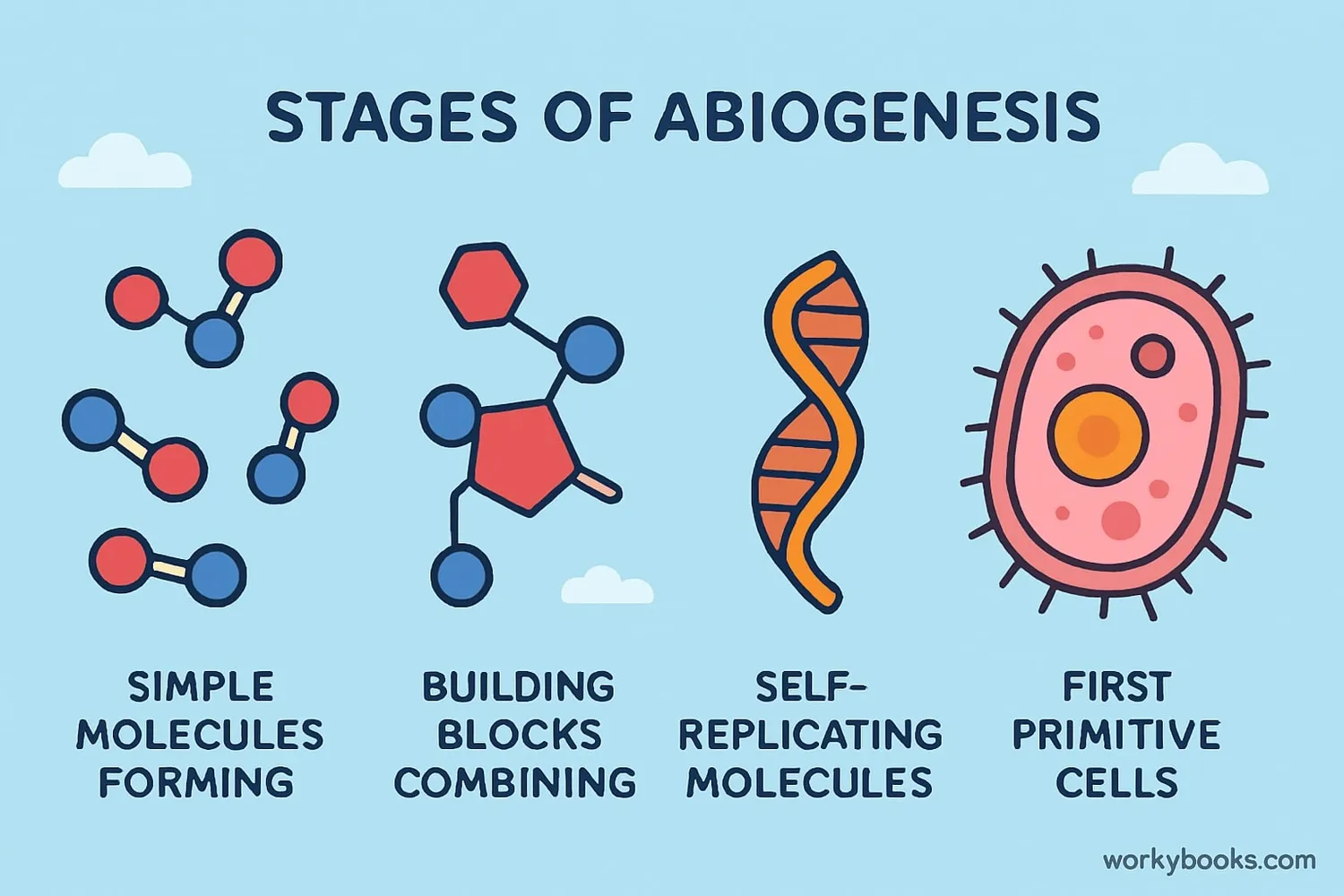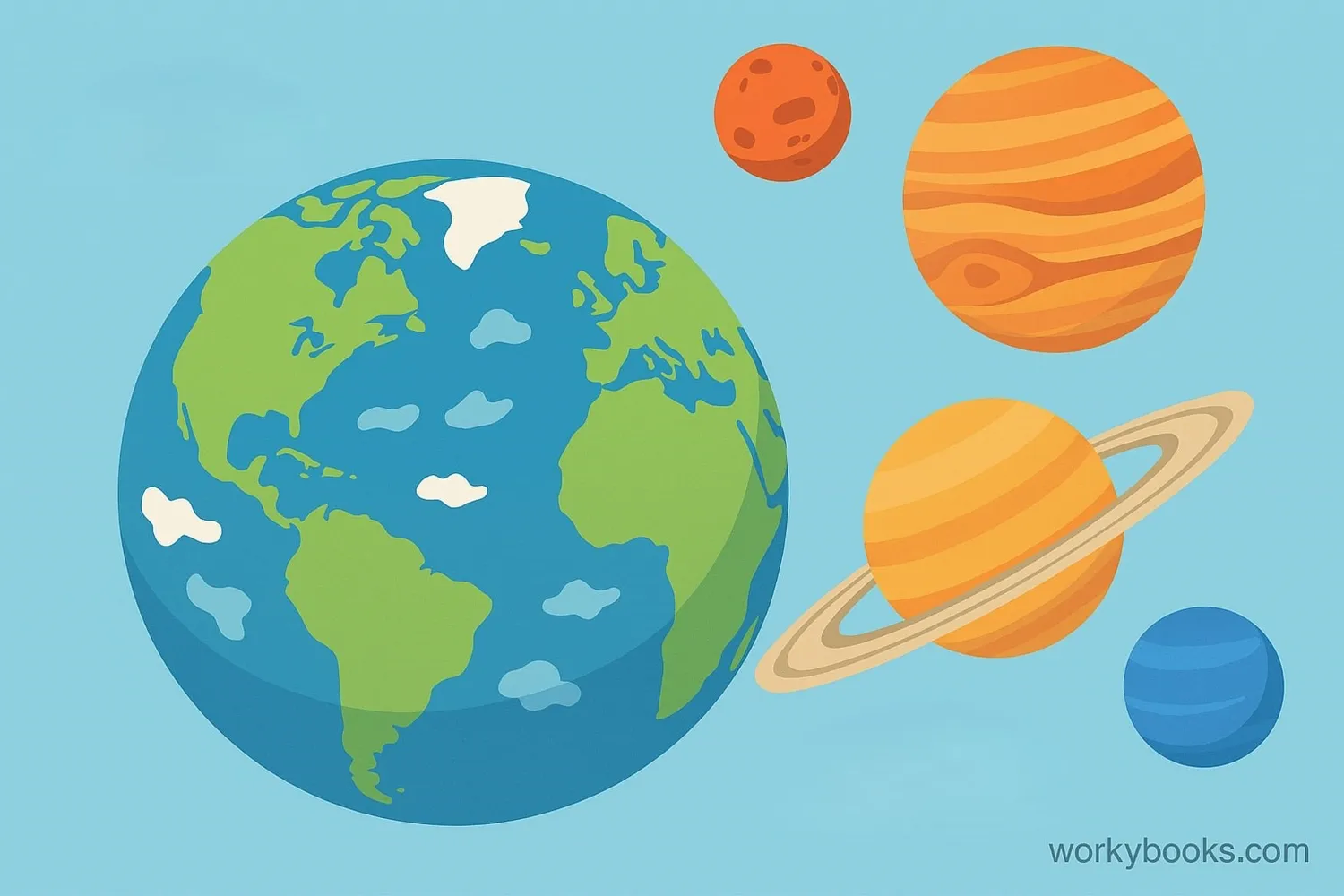Abiogenesis - Definition, Examples, Quiz, FAQ, Trivia
Discover how life might have started from non-living matter on early Earth!
What is Abiogenesis?

Abiogenesis is the scientific idea that life can come from non-living matter through natural processes. The word comes from "a-" (meaning not) + "bio" (life) + "genesis" (beginning). It explains how the very first life forms might have started on Earth about 3.8 billion years ago.
This is different from "spontaneous generation," which was an old idea that life regularly appears from non-living matter (like maggots from meat). Scientists proved that spontaneous generation doesn't happen today, but abiogenesis is about how life began once, long ago, under very different conditions.
Did You Know?
Earth formed about 4.5 billion years ago, and the first life appeared about 3.8 billion years ago. That means life began relatively quickly after Earth formed!
How Might Abiogenesis Have Happened?

Scientists think life began through a process called chemical evolution. This is how simple chemicals might have become complex enough to form the first living cells:
Simple Molecules Form
On early Earth, simple chemicals combined to form building blocks like amino acids and nucleotides
Building Blocks Combine
These molecules joined to create proteins, RNA, and other complex structures
Self-Replication Begins
Some molecules gained the ability to make copies of themselves
First Cells Appear
These molecules became enclosed in membranes, creating the first primitive cells
Scientists call the early ocean with these chemicals the "primordial soup". Energy from lightning, volcanoes, and the Sun helped drive these chemical reactions. Over millions of years, these processes might have created the first simple life forms.
Key Ingredients
The early Earth atmosphere had no oxygen but contained methane, ammonia, water vapor, and hydrogen - perfect for forming organic molecules!
Evidence & Experiments

How do scientists study abiogenesis? They can't go back in time, but they can:
Lab Experiments
Recreating early Earth conditions to see if life's building blocks form
Meteorite Analysis
Studying space rocks that contain organic molecules
Extreme Environments
Studying deep-sea vents where life might have begun
The most famous experiment is the Miller-Urey experiment (1953). Stanley Miller and Harold Urey recreated early Earth conditions in a lab:
• They filled a glass apparatus with water and gases (methane, ammonia, hydrogen)
• Added heat and electrical sparks to simulate lightning
• After one week, they found amino acids had formed!
This showed that life's building blocks could form naturally under early Earth conditions. Scientists have since found amino acids in meteorites, proving these molecules form in space too!
Why Abiogenesis Matters

Studying how life began is important for many reasons:
Understand Our Origins
It helps us understand where all life comes from
Search for Alien Life
It guides the search for life on other planets (astrobiology)
Medical Advances
Understanding life's building blocks helps medicine
Abiogenesis shows us that life might be common in the universe. If life started naturally on Earth, it might start on other planets with similar conditions. This exciting idea drives the search for life in our solar system and beyond!
While we don't have all the answers yet, each new discovery brings us closer to understanding how life began from non-living matter billions of years ago.
Abiogenesis Knowledge Quiz
Test what you've learned about the origin of life! Answer all 5 questions to see how much you know.
Frequently Asked Questions
Here are answers to common questions about abiogenesis:
Science Trivia: Amazing Origin of Life Facts
Discover fascinating facts about abiogenesis and life's beginnings:
Time Travel
If Earth's 4.5 billion year history were a 24-hour day, life would appear at about 4:00 AM, and humans wouldn't show up until 11:59:59 PM!
Space Ingredients
Some meteorites contain over 80 different amino acids! This suggests that life's building blocks are common throughout the universe.
Long-lasting Experiment
Scientists re-examined the original Miller-Urey samples 50 years later using modern tools and found even more amino acids than originally discovered!
Deep Sea Start?
Some scientists think life may have begun around hydrothermal vents on the ocean floor, where mineral-rich water provides energy and chemicals for life.


